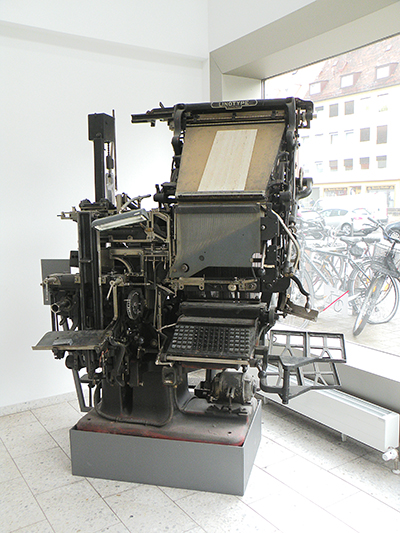
|
First, let me say that I do not believe in “psi powers.” By this term I mean the various presumed ways that the human brain generates a signal of some type—probably electromagnetic, but possibly some other form of energy—that allows it to transfer thoughts directly from one brain to the next, commonly called “telepathy,” without passing through the brain’s speech centers, nerves, and vocal chords. In some cases, these presumed powers include manipulating physical objects, or “telekinesis,” without actually touching them. Of course, we can communicate by looks, words, touches, and the implications of our physical actions. We can also manipulate thoughts and move mountains by building and programming our wealth of machines. But the naked human brain is not able to directly communicate or manipulate anything outside the bony enclosure of the skull—or so I believe.
Note, however, that the operative word in the above paragraph is “believe.” This is a feeling I have, a view of the world, that is largely based on negative data. I have not conducted a methodological study of these claimed powers, such as the Rhine Research Center at Duke University has conducted. My presumption is based upon my bias that people who claim to practice these powers are charlatans, and those who claim to have witnessed them have been duped by charlatans. But negative data is not proof. So I allow that there may be, somewhere, perhaps in hiding, people who can communicate directly mind-to-mind and perhaps even move mountains just by thinking about it.
And yet, in my own life, I can feel the tug of these presumed powers. My mother often spoke of being “fey,” a word derived from Old English and meaning otherworldly, subject to apprehensions and visions, and possibly touched by the fairies—not that my mother believed in fairies per se. What she meant—or rather, what I took from her use of the word—is someone attuned to an unseen world, and perhaps a world that cannot be explained rationally. And she did not mean the world of the Christian God, His Choir of Angels, and Holy Mother Church. She meant that other, native-English kind, where fairies and other unseen creatures and forces might wait outside the door.
She and I felt we shared a mental bond. It was not a form of telepathy, where we could put whole thoughts and complete sentences into each other’s heads and get a coherent reply. Rather, we would find ourselves thinking the same thing at the same time. For example, once when she was pulling into a gas station, I said, “I’m thinking of a tiger.” And I had a clear image in my mind of a jungle man-eater. “So am I,” she replied. It was that kind of link.
Of course, this was a period when Exxon (back then “Esso”), who owned many gas stations in our area, had the advertising slogan “Put a tiger in your tank.” So it was possible that our thoughts were influenced by advertising imagery if not an actual sign as we drove into the station. However, I am pretty aware of my visual surroundings—and I was even more so back in my childhood. I would have made the link to any sign on the premises. Besides, it might have been a Gulf station.
Aside from any link to my mother, I can usually get a feeling about people whom I meet in person that I don’t sense when looking at a photograph or video, or from reading a description or a message in an email or letter. Sometimes, this is an immediate feeling of trust and security. More strongly, it is an aversion: something in my subconscious mind is screaming Danger! Dislike! Go away! Get away! I have not actually gotten up and left a room that such people were occupying. But my guard was up. I was uncomfortable. And I made every effort to avoid them after that. Not love at first sight but quite the opposite.
Am I actually picking up on some malign “vibe”—to use a word from my college days in the 1960s? Am I actually reading intentions through some kind of psi power? Or am I reacting to a cast of the eye, a squint, a sidelong glance, or perhaps a shape of the mouth, a slight sneer, or a curled lip? I might recognize any of these as danger signals, either from previous personal experience or from the cultural portrayal by artists and actors of what villainy might look like.
Being able to “read” another person from his or her facial expression, tone voice, and body language is a survival characteristic. Being able to intuit another person’s probable intentions from the nature of what they are saying and how they say it—the verbal sneer, the hollow ring of false friendliness or concern—was how our ancestors—or the ones that lived, anyway—avoided chicanery, capture, destitution, and possible vivisection. Generations of interaction with the real human animal, rather than the cheerful and benign creature we carry in our imaginations, has made most of us expert at sizing up strangers from verbal and nonverbal clues.1 No psi powers are needed.
And yet … I’m pretty good at distinguishing what I see and hear from what I know. Yes, I get the visual and aural cues: they can also be picked up from a picture, a video clip, or a recording, too. Modern cinematographers and the actors they capture on film are expert at conveying whole story lines with a subtle look—and most of the audience gets it. But beyond that, I also get a sense from a person’s physical presence. Before he or she speaks and acts, I get that vibe.2 And I don’t think it’s only my imagination.
And where would we all be if the entire world was rational, subject to logical analysis and explanation? It would be a duller place. We would all starve for lack of the juice that feeds our imagination.
1. Of course, there are also many people who are amiable, hopeful, gullible—and can’t tell a damn thing about the people they meet. My father was not any of those things, and yet he had a hard time reading people. He maintained a few good, close friends during his life, but for the most part he kept to himself. And yet he twice put his trust in people whose very presence had both my mother and me internally screaming Danger! Keep away!
2. And yes, it does work both ways. This is the “chemistry” that people talk about when they meet someone and fall in love. Things just click. You just know. That other person just lights up in your mind.


